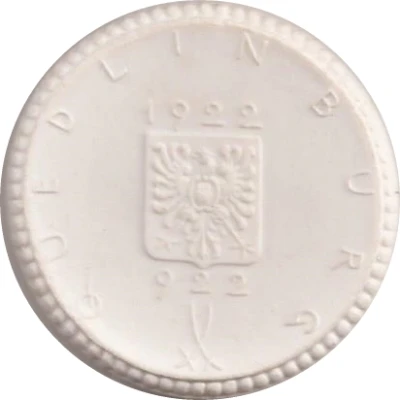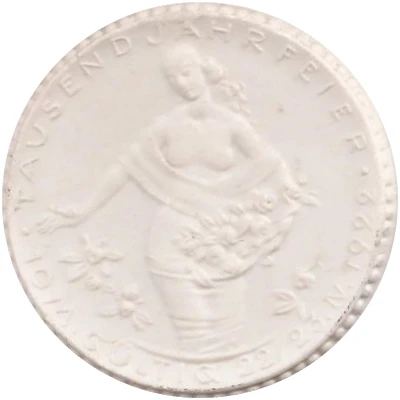


© ALAMIR
10 Mark - Quedlinburg
1922 year| Porcelain (white) | 5.2 g | 32 mm |
| Issuer | City of Quedlinburg (Prussian province of Saxony) |
|---|---|
| Period | Weimar Republic (1918-1933) |
| Type | Standard circulation coin |
| Year | 1922 |
| Value | 10 Mark |
| Currency | Mark (1914-1924) |
| Composition | Porcelain (white) |
| Weight | 5.2 g |
| Diameter | 32 mm |
| Shape | Round |
| Technique | Milled |
| Orientation | Medal alignment ↑↑ |
| Demonetized | Yes |
| Updated | 2024-10-04 |
| Numista | N#186422 |
|---|---|
| Rarity index | 91% |
Reverse
Script: Latin
Lettering:
TAUSENDJAHRFEIER
10 M
GÜLTIG 22/23.IV.1922
Edge
Reeded
Comment
Menzel: EEEInteresting fact
One interesting fact about the 10 Mark coin from Quedlinburg is that it was made of porcelain, which is a unique material for coins. Porcelain was chosen for its durability and resistance to wear and tear, and it gave the coin a distinctive white color. This made the coin stand out from other coins made of more traditional metals like copper, silver, or gold. The use of porcelain also added an extra layer of difficulty in the manufacturing process, as it required a high level of craftsmanship to ensure that the coins were properly made and had a consistent quality. Despite the challenges, the porcelain 10 Mark coin from Quedlinburg remains a fascinating and highly collectible piece of numismatic history.